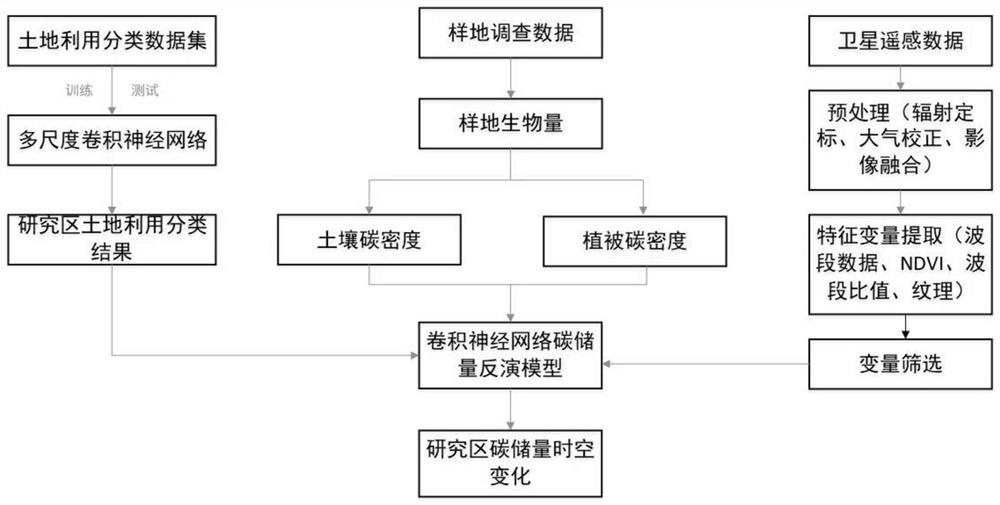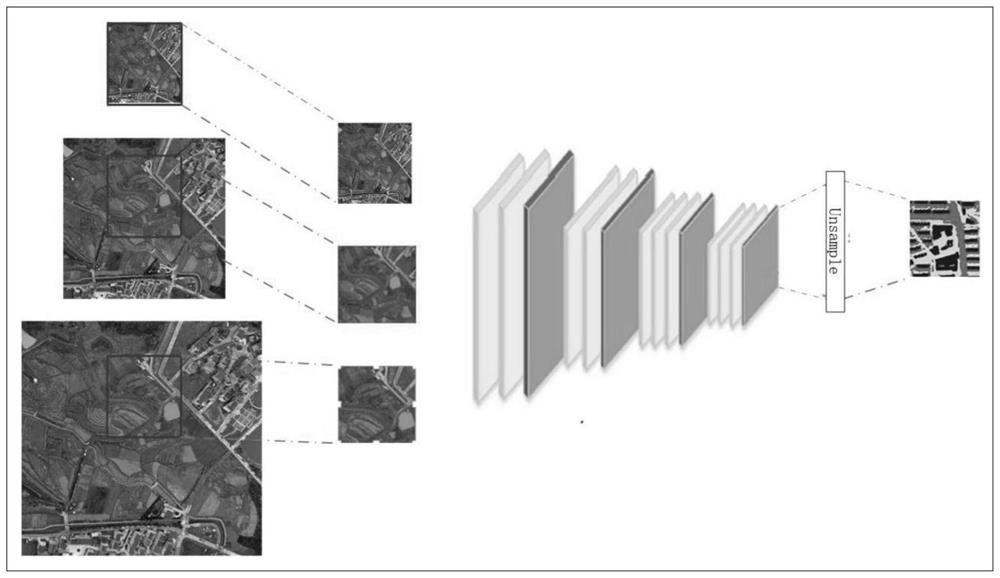A Quantitative Estimation Method of Land Use Change and Carbon Stock Based on Remote Sensing Data
A technology of remote sensing data and land, applied in the field of remote sensing, can solve problems such as variable collinearity
- Summary
- Abstract
- Description
- Claims
- Application Information
AI Technical Summary
Problems solved by technology
Method used
Image
Examples
Embodiment Construction
[0025] The present invention will be described in further detail below with reference to the accompanying drawings and specific embodiments.
[0026] like figure 1 The shown quantitative estimation method of land use change and carbon stock based on remote sensing data includes the following steps:
[0027] Step 1. Image download: According to the research needs, download the remote sensing images of the designated research area over the years. Obtain annotated land classification datasets;
[0028] Step 2: Image preprocessing: perform geometric correction, mosaicking, cropping, radiometric calibration, atmospheric correction and other preprocessing operations on remote sensing images;
[0029] Geometric correction: The process of correcting and eliminating the geometric errors of remote sensing images using a series of mathematical models.
[0030] Radiometric calibration: Convert the value or voltage recorded by the sensor into absolute radiance.
[0031] Atmospheric cor...
PUM
 Login to View More
Login to View More Abstract
Description
Claims
Application Information
 Login to View More
Login to View More - R&D
- Intellectual Property
- Life Sciences
- Materials
- Tech Scout
- Unparalleled Data Quality
- Higher Quality Content
- 60% Fewer Hallucinations
Browse by: Latest US Patents, China's latest patents, Technical Efficacy Thesaurus, Application Domain, Technology Topic, Popular Technical Reports.
© 2025 PatSnap. All rights reserved.Legal|Privacy policy|Modern Slavery Act Transparency Statement|Sitemap|About US| Contact US: help@patsnap.com



